Excellent. Great cast. I like the guy from Killing Them Softly. And Ali has grown on me tremendously. Loved the descriptive exchange about prison life. Brave dialogue. Personally I feel no shame in finding that hilarious.
Why the creator have to fuck with the director,I don’t know,but I’m hooked. Episode 3 will be interesting to see if the direction is noticeaby different in style. Peadophile rings and dementia. Heavy brave subject matter. I do know that im never gonna develop my writing skills on a fucking mobile phone. Send me a laptop and ill sketch out series4.
Took long enough for S3. Guess that was written on a cell phone ! 8/
“This is a world where nothing is solved. Someone once told me, ‘Time is a flat circle.’ Everything we’ve ever done or will do, we’re gonna do over and over and over again…”
– Rust Cohle, True Detective series 1
When Nic Pizzolatto created True Detective for HBO back in 2014, he had no idea that his brooding crime drama, complete with its nihilistic Nietzsche-quoting lead played by Matthew McConaughey, would be such a huge hit with critics and audiences alike. Its striking mix of beautiful cinematography, dark themes, engagingly odd characters, philosophical monologues, obscure literary references and hat tips to the occult won the show a sizeable cult following. One that was to give the eventually disappointing second season a pretty tough act to follow.
For its third run, Pizzolatto has gone back to the original winning formula. Let’s get this cleared up nice and early… True Detective series 3 is much more similar to its debut outing than its sophomore effort. Much, much more similar.
The comparisons are obvious from the get-go. It doesn’t feel like a ‘homage’ or a cowardly return, either. More of a realignment. And, after the misstep of the jarringly confused and messy second series, a very welcome one, at that. It feels as if we’re back in the same universe, such are the parallels and similarities.
We’re also back to a pair of slightly mismatched cops driving around the Deep South looking for child killers. There’s a multi-timeline structure here too; this time we’re watching the story unfold across three passages of time (1980, 1990 and 2015). There’s also a return of the foreboding atmosphere, the Southern Gothic ambience, the symbolism and even the frequent scenes of two grumpy investigators mumbling at each other in a car. The resemblance between series 1 and 3 is striking.
While the likeness to the maiden series is obvious and intentional (there’s even mention of the ‘crooked spirals’ so beloved of the amateur internet sleuths that make up the show’s most dedicated fanbase), this is no lazy carbon copy. From the off, there are different themes at play here in season 3. One topic that’s touched upon subtly here in this first part is racism. The main issue, though? The reliability of memory and how much can we trust ourselves and our own version of what happens in life.
The excellent Oscar-winning Mahershala Ali plays the lead, Wayne Hays. A former Vietnam veteran, we watch this outsider cop across the trio of time periods trying to work out exactly what happened to Will and Julie Purcell, a pair of young siblings that disappear one day from their Arkansas home. Stephen Dorff plays Hays’ partner Roland West, another former armed forces type and ‘man’s man’, not unlike season 1’s Marty, played by Woody Harrelson.
As this premiere draws to a close, there’s a break in the search for the missing children. Hays, an expert tracker from his days as a ‘lurp’ – or ‘long-range reconnaissance patrolman’ – in Vietnam finds the body of young Will. His corpse is posed in a praying position, with a series of ominous poppet-like dolls dotted all around, leading to the scene. The second timeline has Hays giving a deposition to some colleagues about his findings on the case, the insinuation being that there’s been a break in the case ten years on and the man they had originally put away for the crime may well be innocent…
As an older man, in 2015, we find out that Wayne’s memory is deteriorating. He’s developed a form of dementia and it’s clouding his mind, regardless of how much he insists to his son Henry (Ray Fisher) that thinking and talking about the old Purcell case is a good way to exercise his brain. The fascinating thing about having the older Hays as one of our guides through the story is that he is, through no fault of his own, the very definition of the unreliable narrator.
How will the story play out? Who will be turn out to be responsible? It’s too early to say, of course. Our early thoughts? Well, given the tone of True Detective, they’re suitably Nietzschean. With the overarching theme seeming to be the unreliability of memories and knowing how dark True Detective can get, we think there’s a chance that Hays – and us by extension – will never really find out who killed Justin Purcell.
Let’s wait and see. “This is a world where nothing is solved,” after all.
Did you tune in to watch True Detective series 3 episode 1? Let us know what you thought of it in the comments below…
Read Steve’s review of True Detective series 3 episode 2 here.
1 Comment
Join the discussion
Please note: Moderation is enabled and may delay your comment being posted. There is no need to resubmit your comment. By posting a comment you are agreeing to the website Terms of Use.
Still catching up? Read Steve’s review of episode 1 here.
With both HBO and Sky Atlantic deciding to show the next episode of True Detective’s much-anticipated third series immediately after the first, ‘live’ viewers only really had the time it took to make a cup of tea to digest the opening hour before the second of its eight-part run began.
Luckily for us, things picked up right where they left off. Julie Purcell is still missing, but her brother Will has been found. His neck broken and body posed in a horrifically ritualistic way (almost like a Holy Communion?), the hunt is on for a killer we already know we won’t catch for a minimum of another three and a half decades. At least, by the end of this second episode, we know that Julie survives. We close out on the 1980 timeline with a (rather poorly-written) note from – it would seem – her abductor…
“DO NOT WORRY JULIE IS A GOOD PLACE AND SAFE THE CHILDREN SHUD LAUGH DO NOT LOOK LET GO.”
We also learn that she’s alive in 1990 after her fingerprints are found at a pharmacy robbery. And we find out that someone is serving time for Will’s murder, albeit someone that probably shouldn’t be. Who do Hays and West pin the killing on ten years previous? Will’s uncle? Or his father, perhaps…?
Speaking of whom, Scoot McNairy (Killing Them Softly, Godless) plays grieving dad Tom Purcell note perfectly here. He’s particularly effective in a scene showing him attempting to return to work in an auto parts factory after Will’s body is found, only to be told to go home as his attendance is ‘distracting’ for his fellow workforce. It’s a heartbreaking moment.
As episode 2 continues to merge (and cleverly even overlap) its three timelines, it shows three different versions of our lead investigator Wayne Hays. 1980 Hays is a somewhat friendly, approachable and hopeful man. His lightsaber impression to cheer up a crying child during a traumatic interview demonstrates this quite nicely. As does the gentle wooing of his eventual-wife and his bonding with fellow ‘nam vet and potential suspect Brett ‘Trash Man’ Woodard. There is a darkness there too, though. Hays and his partner Roland West’s willingness to let off a little steam ‘interrogating’ (well, needlessly beating…) a known local child molester with no particular connection to the case more than hints at an ability to break bad when it suits.
A decade on and the toll of the case on Wayne is visible. He’s now married to the schoolteacher Amelia Reardon (Selma’s Carmen Ejogo), with two children of his own. But while he’s more sure of himself – something demonstrated by his bullishness during his deposition – he’s a much more closed book. His disposition is even made more gloomy when he discovers that Julie is still alive ten years on from her disappearance, the revelation just seems to confuse him further.
In 2015 however, Hays is all but lost. Widowed and suffering from worsening dementia, he is a haunted man, heartbroken by Amelia’s death and wrecked by his inability to solve the Purcell case. We find out that something happened with him and his daughter to drive her away. We also find out that he never read all of his wife’s hit book about the case, which can only lead us to think that he’s wracked by a form of shame at not solving the thing. Or something worse.
With the frequent time skips and Ali playing all three versions of himself, the make-up here needs to be perfect. Thankfully, it is. Because of the top-notch prosthetics, Ali manages to look 35, 45 and 70 entirely convincingly. Hearty hand claps to the make-up department.
The constant cutting from one timeline to another means we can never quite relax and we’re constantly aware how futile the investigation is (given that it’s clear from the start that the crime isn’t solved – at least in the first two timelines, anyway). The cumulative effect of that is pretty unsettling and, well, more than a little depressing. Hays is consumed by a case he may never solve.
Or will he…? We end the episode with Hays as an old man, out walking in his dressing gown, in a confused state. He looks up and, with no memory of how he got there, he’s walked to Shoepick Street. The very street that the Purcell kids disappeared from 35 years previously. But why? Could there be life in the old dog yet?
The first two instalments of True Detective series 3 were directed by one of the very best directors out there working today, Jeremy Saulnier (Blue Ruin, Green Room, Hold the Dark). He was signed up to oversee the entire series, but apparently fell out with the show’s creator Nic Pizzolatto, walking off set after wrapping up the second episode. Here’s hoping that the next six parts manage to keep up the quality shown so far… Only the bar has been set pretty high already.
What did you make of True Detective series 3 episode 2? Let us know in the comments below…
1 Comment
Join the discussion
Please note: Moderation is enabled and may delay your comment being posted. There is no need to resubmit your comment. By posting a comment you are agreeing to the website Terms of Use.
Still catching up? Read Steve’s review of episode 2 here.
TV viewers have never been louder. With social media and internet forums alight with viewpoints and opinions both before and after all major shows are broadcast, producers hardly need to organise focus groups anymore. The television-watching masses make their opinions very audible. And sometimes, it seems, the programme-makers listen to us.
Few people had too many positive things about the last series of True Detective. While it had a (mostly) brilliant cast, plenty of atmosphere and a few memorable set pieces, on the whole – it was messy. For this third run, fans of the show wanted a return to the ways of the maiden season. Perhaps without quite as much of the extended monologues full of overly-stylised Nietzschean psychobabble.
And that’s exactly what we’ve got here. So far? So good. This third series of True Detective is near-perfect TV crime drama.
To quickly recap the major plot points we need to check in across three timeframes: 1980 (when the crime is committed), 1990 (when the case is reopened) and 2015 (old man Hays and the documentary crew):
1980: Struggling with leads, Hays and West search the Purcell home again, discovering that the kids used to meet a mysterious friend who drove a brown sedan in the woods to play a dice-based Dungeons & Dragons-style game. While at the house they also discover some photos of Will from his First Communion showing him positioned exactly as he was when Hays found him dead in the nook. In another scene, obvious red herring suspect (and potential fall guy) Brett Woodard, of ‘trash go-kart’ fame, is beaten and threatened by a stereotypical mob of angry local rubes. He immediately moves something in the shape of a child’s body from a lock-up that will inevitably turn out to merely be similarly shaped.
1990: The pressure is showing on Hays. He knows the man they put away for the crime is innocent and that, ultimately, he bungled the case. His own investigations, conducted with his wife, merely lead to an argument with her and he’s shown to be more than a little paranoid when briefly losing his kids in the supermarket. There is a light moment however when Roland (now a God-fearing lieutenant) recruits his former partner to his new task force, put together to reexamine the case.
2015: The documentary maker continues to grill Wayne, insinuating that the entire case was mishandled and that key witnesses were ignored. The story appears to be that the brown sedan was linked to a child abuse ring and that somehow either incompetence or cover-up obscured the fact. Amelia returns to Wayne during ‘an episode’ of some kind and hints further at his guilt or mistakes in the case. What had he ‘left in the woods’, exactly…?
A quick word (it won’t be the last throughout this series) on lead actor Mahershala Ali… How good is he, eh? Well, we’ll tell you – he’s very good. It’s hardly a revelation, given the 44-year-old picked up a Best Actor Oscar three years ago, but still.
Stephen Dorff also stands out as Hays’ one-time partner Roland West, especially here in this third instalment where he’s given much more to do. With his swagger, chunky Masonic ring and an enviable collection of slightly weird coats, the Blade and Backbeat star is seemingly back from the acting wilderness.
While we’re putting our hands together for the cast, let’s give Carmen Ejogo a round of applause too. Already she’s made Amelia feel real. Multifaceted yet believable, there’s a dark side to Wayne’s eventual wife. In the 1980 timeline, she has a burning ambition to be a writer – something she goes on to achieve, much to her husband’s distaste given he’s the primary character in her book. This week’s scene where she dresses up (‘bookish yet sexy’) to flirt with and manipulate a dumb Oklahoma cop into spilling beans about the now 20-year-old Julie’s prints in the Walgreens, was a stand-out moment.
As for us working out who the killer is… Well, it’s no easy feat. As ‘Purple Hays’ demonstrates. The two previous series of True Detective have gone the way of so many whodunits and revealed the murderer to be someone glimpsed early on in the series. Will series creator Nic Pizzolatto stick to that winning formula? Or will he mix it up here? Our money is on the latter. As Hays mumbles to Roland here in episode 3, “it’s like a thing that’s staring right at us.”
Now, as much as a person can’t willingly bring on dementia or Alzheimer’s disease, could it be that, at least in part, Hays’ memory loss is due to him refusing to acknowledge or accept some deep, dark truth about the case? Might the identity of Will Purcell’s killer have been squirrelled away at the back of his failing mind the whole time…? Time, we’re sure, will tell.
Half the fun of True Detective is deciphering the clues and attempting to work out what’s going on and who’s behind it all. But at this relatively earlyish stage, we’re not going to get too wrapped up in doing Hays’ job for him. We’re just going to carry on sitting back and enjoying the ride.
Which means yes, we’re nowhere near working it out yet.
What did you make of True Detective series 3 episode 3? Let us know in the comments below…
Join the discussion
Please note: Moderation is enabled and may delay your comment being posted. There is no need to resubmit your comment. By posting a comment you are agreeing to the website Terms of Use.
Still catching up? Read Steve’s review of episode 3 here.
“You got some major cognitive dissonance,” Detective Wayne Hays tells his wife Amelia after she suggests their heated argument here in episode 4 be solved with a little underwear-dropping, against-the-wall marital action. And he may be right. But then again, when it comes to following the intricacies of a series of True Detective, it pays to be able to juggle multiple theories and ideas in your mind at once. No matter how conflicting, jarring and incompatible they may be with one another.
This fourth episode of series 3 – and twentieth in total – is the very first to be directed by the show’s creator, Nic Pizzolatto. A writer by trade, you’d be prepared to allow a little meandering or a slight lack of focus to creep into the drama here, but the reality was quite different. This was easily the sharpest, most absorbing and tightest hour of True Detective’s third season yet.
So intent was Pizzolatto on shifting things on here, he seemed to forget a few of the more stylistic flourishes employed by this third series to date, with the timeline shifts being slightly too workmanlike and lacking in any real subtlety or pizazz. Still, he did make it easily the funniest episode so far, with at least four or five laugh out loud one-liners peppering the script this week. Freddy Burns’ interrogation scene, for example, wouldn’t have been out of place on Saturday Night Live. It was a notable tonal shift on previous weeks, but a welcome one nonetheless.
It was also the run’s most revealing episode. Up to this point, there’s almost been a kind of constipation around details. Sure, we’ve got a crime, a cast of characters, some suspects and even a few clues. Yet we’ve also had a real feeling that things are being held back. Emotions, plot points, character development… All that began to change here as we neared the midway point, though. If the first half of the season was mostly about story pitching and mood setting, we’ve got a hunch that we’re in for a real ride now in the second half.
Alongside the main ‘detective’ plot, we saw more of how Wayne and Amelia’s relationship works/worked. With her seemingly adept at being to manipulate and control Hays, even when he’s intent on shutting down emotionally. While still far from malevolent, Carmen Ejogo’s character continues to hint at a darker side.
Easily the most notable theme dealt with here though was race. From how the detectives and the gathering crowd interacted with each other during their tense visit to the trailer park (“How you gonna wear that badge…?” “It’s got a little clip on it.”), to the visit to the old lady that made the dolls, race relations is a topic that’s never far away. Given the Purcells’ casual use of the N-word and other pejorative terms, there’s little wonder too.
This fourth slice of Southern Gothic ended with a serious promise of an explosive opener next week. Quite literally. As the ‘nam vet ‘Trash Man’ Brett Woodard is chased back to his house by the angry mob of rednecks that have made him Scapegoat Number One, Hays and West attend the scene. They jump out of their car just as a booby-trapped bomb looks set to explode and a possible firefight may well ensue. The resulting bullet exchange perhaps accounting for Roland’s limp. We’ll have to see.
As for who killed Will Purcell… Well, we’re still not all that much closer to finding out who was behind it, or who took his sister Julie. In 1980 we’ve got the teenage Freddy Burns weeping suspiciously in custody and a messy search for a one-eyed black man causing diplomatic incidents (apparently missing eyes were surprisingly common in the industrial sun belt of America back before the advent of Health & Safety).
Then there’s the creepiness of the Purcells’ Catholic priest and the continuing oddness surrounding the family of the town’s big employer, chicken folk, the Hoyts. Oh, and there’s the cousin Dan O’Brien (who we discover is now dead), the overly guilty mother Lucy, the booby-trapping Trash Man and whoever drives that elusive brown sedan…
There are reasons to suspect all of them. Maybe they all did it. Now there’s a theory that really does require some major cognitive dissonance.
What did you make of True Detective series 3 episode 4? Let us know down in the comments…
Join the discussion
Please note: Moderation is enabled and may delay your comment being posted. There is no need to resubmit your comment. By posting a comment you are agreeing to the website Terms of Use.
Still catching up? Read Steve’s review of episode 4 here.
True Detective is, at its core, all about how deeply affected human beings can be by tragedy. In this case – as with its debut series back in 2014 – the tragedy is the disappearance/murder of children. In forensic detail, we’re shown just how devastating and far-reaching the fallout can be when utter catastrophe strikes.
The immediate damage we’ve seen. The impact that Will’s murder and Julie’s disappearance has on the family is obvious. Tom is a wreck and Lucy doesn’t live to see the next decade, dying of a heroin overdose in Nevada. But the ripples go far wider than that.
There’s the negative influence it has on those unfairly accused or under suspicion of the crime(s). There’s an interesting and telling scene here in this fifth episode, ‘If You Have Ghosts’, that shows a slightly burnt out Freddy Burns a decade on from his grilling by detectives Hays and West, still utterly traumatised from the abuse and threats he suffered during his time under arrest.
This third series is mostly occupied with the toll taken on the detectives, though. This is demonstrated perfectly in the episode’s best scene right at the end, showing a reuniting of the two pals on Roland’s porch in 2015. Some 24 years after they last spoke. Two stubborn old men with no nothing left to lose stare back down at the case which helped destroy their lives in different ways.
This reunion scene, with its uneasy bonding, convincing old man makeup and ‘getting the band back together’ vibe was touching and thrilling in equal measure. But for real thrills, we were treated to an explosive shoot-out this week that saw ‘The Trashman’ Brett Woodard defending himself from an angry mob in rather elaborate style.
This blast ’em up action scene resulting in half a dozen dead rednecks and law enforcement agents proved to be a nice change of pace and called to mind the now-famous six minute Steadicam tracking shot from the maiden series of True Detective. And, to a lesser degree, the mass cops vs bad guys shootout from the fourth episode of the sophomore effort. The bullets, bombs and bleeding bad guys come as something of a welcome relief, sandwiched as they are in between so many scenes of a ‘brooding’ Detective Wayne Hays.
We later discover that it’s Woodard that ended up wrongly taking the fall for Will’s murder in the 1980s, in a classic case of laddering. A decade later and his estranged children are fighting the good fight to clear his name. And with good reason. Only Hays has an epiphany that seems to prove the man’s innocence… Will’s rucksack was found under the house post-blast. Yet was oddly clean. Meaning it was, in all likelihood, planted there by someone. Woodard is a convenient scapegoat. With only police allowed at the crime scene, that suggests a cop’s involvement to some degree.
What else did we find out this week? Well, In the 1990 timeframe, Hays realises that it was Lucy Purcell that wrote the ransom note. He recognised the phrase ‘children deserve to laugh’ from a quote of hers in his wife Amelia’s book – which he’d only just decided to read…
Speaking of laughs, as the final scene comes to an end, Hays eventually breaks his old partner and convinces him to join him trying to crack the case one more time. “I could use a laugh,” West finally says, relenting. They couldn’t solve the thing in their 30s or their 40s. Can they piece it together in their 70s…? Well, for the sake of our collective sanity, we certainly hope so.
Only if we don’t find out who is behind all this, it’s going to leave us pretty devastated ourselves…
What did you think of True Detective series 3 episode 5? Let us know in the comments below…
Join the discussion
Please note: Moderation is enabled and may delay your comment being posted. There is no need to resubmit your comment. By posting a comment you are agreeing to the website Terms of Use.
Still catching up? Read Steve’s review of episode 5 here.
Okay. Now we’re getting somewhere. The plot, threads, characters, suspects and clues all firmly in place, True Detective series 3 is really rolling now. After this week’s episode, the sixth of eight, we’re well and truly mired in the murky swamp of conspiracy, with the pieces of the macabre jigsaw finally starting to come together…
Endings have proved a little tricky for True Detective in the past. The climax of the much-lauded – and frankly superb – maiden outing was a little disappointing, given the impressive build-up it created. And the convoluted and messy ending to the convoluted and messy sophomore effort warrants no great scrutiny at all. But there’s been a real maturity and assurance about this third series which makes us confident that we’re in for a helluva ride with these next two episodes.
This week’s slice of True Detective, entitled ‘Hunters in the Dark’, sees us start and end with the murdered kids’ father, Tom Purcell. It’s 1990, the Woodard case has fallen apart and senior law enforcement are keen to find another fall guy. Luckily for them (or contrived by them, we’ll have to see…), a phone call comes in from one Julie Purcell – from her ‘pink castle’ – that shines a rather unpleasant light on Scoot McNairy’s character.
Could he have killed his boy? Or colluded with Brett Woodard? Anyone who witnessed Tom’s primal scream during his interrogation here will know right away that the man is innocent. Hays and West lent on him, but they both know he’s not really involved.
Tom is hiding something, though: he’s gay. The detectives discover that he had been seen ‘at the queer clubs’ and soon find ‘gay conversion therapy’ pamphlets from his local church at his house. Could this internal dilemma explain Tom’s erratic behaviour and failing marriage? It would certainly make sense.
Our two intrepid police types keep digging and find that the police officer that ‘found’ the seemingly planted rucksack at Brett Woodard’s house quit the force back in ’81, immediately taking up a plum Head of Security role over at the shady chicken place, Hoyt Foods. The duo verbally spar with the arrogant and unpleasant Harris James before a diner meet-up with Lucy Purcell’s drug-addicted stepbrother Dan O’Brien. He infers that Tom is innocent and that something much, much bigger is going on.
We’re treated to our first confirmation of a disturbing, wide-reaching and nefarious conspiracy at play here in what is a wonderfully tense and unsettling final scene. Tom overhears some rather careless police types discussing Roland and Wayne’s catch-up with O’Brien and decides to pay him a visit. A few punches and gun points later and Tom’s got the information out of him…
Drunk and raging, we watch him storm the fancy mansion of the boss of the Hoyt Foods company. The security guard allows Tom in and watches him creep about via CCTV. Soon we’re following Tom as he finds a series of creepy underground vaults, corridors and reinforced doors. One of the doors leads into a large pink room… The security guard approaches from behind. It’s Harris James. As a confused and frightened Tom Purcell blurts out ‘Julie?!’ we cut to black.
Child trafficking, elite perversions, cover-ups, police collusion and murder. It’s all coming together quite nicely now…
Our guess? We’re going to go out on a limb and say this: the girl was kidnapped and kept in the pink room for the Hoyt Foods boss’ amusement and/or ‘use’ by a local paedophile ring. Will was killed because he got in the way. The police are helping cover it up on instruction from the Governor/DA. Roland is in on it – at least by the 2015 timeline, anyhow. And another theory we have? Roland and Tom were romantically linked in some respect. We’ll have to see how close we are to the truth in a fortnight’s time.
Whatever is in store and however much of a resolution we may be in line for, it might not be enough for the perma-grimacing figure of Detective Wayne Hays. He’s a hard man to please. He even criticises God here…
“He rested on the seventh day. I always thought He should have put the extra day in. Instead of half-assing it.”
Tough crowd.
What did you make of True Detective series 3 episode 6? With just two instalments left, let us know your thoughts in the comments below…
Join the discussion
Please note: Moderation is enabled and may delay your comment being posted. There is no need to resubmit your comment. By posting a comment you are agreeing to the website Terms of Use.
WARNING: spoilers below. Still catching up? Read Steve’s review of episode 6 here.
Fans of premium quality crime drama waited for this third series of True Detective with bated breath. It was a vital run for the much-debated and discussed HBO show, after all. 2014’s debut season was so good, it barely took a single episode to form a hardcore cult audience. But the second run disappointed and disenfranchised many fans. This follow-up was effectively make or break for Nic Pizzolatto’s mystery detective series…
If you’ve been watching and following our reviews, you’ll no doubt know that it’s been a resounding success. Mostly because it’s returned to so many of the themes, tropes and ideas of series 1. To some viewers it’s been a welcome return, to others it’s merely a safe, sensible decision, while some folk have called it a little lazy. At least now, after this penultimate episode, we know why the two series are so similar… The third series exists in the same universe as the first.
In an earlier episode, we’d already heard ‘True Criminals’ documentary filmmaker Elisa Montgomery (Sarah Gadon) mention the ‘crooked spiral’, a symbol used by the Tuttle Church-fronted paedophile network uncovered by Detectives Cohle and Hart in series 1. But many dismissed it as merely something of an Easter egg. But here we’re treated to a full-on linking of the cases…
‘In 2012, two former Louisiana state police stopped a serial killer associated with some kind of paedophile ring,” Montgomery tells Hays here. “Despite evidence of accomplices, the case never went wider. I think what happened to the Purcell children was connected to a similar group. I think one or both of their parents sold them off. Probably with the cousin’s help. That’s why they’re all gone. Vanished, killed, kept silent.’
‘These groups, they take runaways. Kids in orphanages. Outright kidnapping. And wider investigations are consistently curtailed. In both the Louisiana and Nebraska cases, high-level politicians and businessmen were implicated. People with the power to make these things go away.’
It all makes sense now… Well, at least some of it does, anyway.
Episode 7 saw the return – and then demise – of the smarmy Hoyt fixer and former cop Harris James. We last saw him looming over Tom Purcell as he discovered a pink room in the Hoyt mansion. He went on to kill Julie’s father and stage his suicide – something Wayne and Roland see through pretty quickly. Wayne then works out that the man killed Lucy too and convinces Roland to break bad with him and take Harris out ‘to the barn’ – their off-the-books interrogation room. The beating turns to murder and the two detectives end up digging a shallow grave. Can they keep that hushed up in 2015…?
We ended the episode with a cliffhanger in the 1990 timeline. It appears as though killing Harris James didn’t go unnoticed. In fact, it seems as though the chicken magnate and potentially the man behind the whole conspiracy, Mr Edward Hoyt knew exactly what happened. Almost immediately. As this week’s episode (‘The Final Country’) draws to a close, we get a showdown cliffhanger of sorts as Wayne goes to meet Hoyt and discuss ‘the events of last night’).
Our guess is that Hoyt admits to the crimes but uses Hays and West’s murder of Harris James against Hays, effectively blackmailing him into silence. His later dementia making him forget the deal and reopen the case for a second time…
Eagle-eared TV and film fans may have recognised the voice of Edward Hoyt as The Walking Dead and Henry: Portrait of a Serial Killer’s Michael Rooker. We’ve yet to glimpse the man, but it’s an inspired piece of casting. We look forward to seeing how his shady chicken man can help put the case to bed…
Next week’s instalment is the eighth and final piece of the puzzle. There are plenty of questions that need answering across the hour too. Including (but not limited to):
● Who killed Will Purcell?
● What happened to Julie?
● What’s with the pink room?
● How does Edward Hoyt fit in?
● Who is Isabella exactly?
● Who is the one-eyed man?
● Where is Amelia?
● Are the Hoyt Foundation and the Tuttle Church connected?
● How far does the cover-up go?
● Will the dolls and crooked spirals be fully explained?
● Do Wayne and Roland get to the bottom of it all?
● If so, can solving the case bring either of them peace?
Here’s hoping we find out the answers to some if not most of those questions. But not all of them… Only tying everything up in a nice neat little bow wouldn’t be very True Detective now, would it?
What did you make of True Detective series 3 episode 7? Let us know your thoughts in the comments below…
Join the discussion
Please note: Moderation is enabled and may delay your comment being posted. There is no need to resubmit your comment. By posting a comment you are agreeing to the website Terms of Use.
WARNING: HEAVY SERIES SPOILERS BELOW. Still catching up? Read Steve’s review of episode 7 here.
On Sunday night, Mahershala Ali sat waiting patiently in the dark of the Dolby Theater in Los Angeles. That patience was soon to be rewarded; by the end of the evening he was presented with his second Academy Award for Best Supporting Actor in two years.
While it would be his portrayal of the pianist Don Shirley in Green Book that would earn him his statuette, his thoughts were – by all accounts – on another character he had played recently.
Could Ali add an Emmy to his ever-growing collection of awards for his role as Detective Wayne ‘Purple’ Hays in the third series of Nic Pizzolatto’s True Detective? We wouldn’t bet against it. The 45-year-old Moonlight actor was at the Oscars in body, but in spirit, he was far away. After the ceremony he was apparently seen speaking to True Detective producers about how the finale went down with its audience after it hit US screens on Sunday night. Such is his connection and dedication to the show and character.
The answer? Pretty damn well. On the whole.
Episode 8 was the final instalment of what has been a truly excellent series. After the wildfire success of series 1 and letdown of the follow-up, the future of True Detective very much depended on how this series fared. Luckily for fans of prestige TV drama, it surpassed all expectations.
That’s not to say that this final episode was perfect, though. Some bows were left untied, flapping frustratingly in the Arkansas wind – which is quite an impressive feat, given this last slice of True Detective clocked in at almost 80 minutes.
‘Now Am Found’, like a lot of this run, has serious shades of the McConaughey/Harrelson True Detective that captured our attention some five years ago. Two hard-bitten southern cops, stretched to emotional breaking point, finally solve a case involving dead and missing children. Yet somehow they both miss a palpable sense of closure from doing so. We were even treated to a mysterious gardener proving pivotal once again.
To the plot… Julie Purcell, as we suspected, was sold by her mother to a wealthy local woman, Isabel Hoyt, after the chicken empire heiress lost her own daughter in a car accident. Julie’s brother Will was killed accidentally in woods, with Ms Hoyt and her one-eyed carer/butler/PA Mr Junius Watts covering up the death. She was raised in a ‘pink castle’ at the Hoyt mansion, drugged on lithium until Watts aided her escape as a young teen. Julie then holed up in a convent and, with the help of the sisters there, escaped recapture by faking her death and helping her start a new life.
Julie then gets together with her old school friend – and now landscaper – Mike Ardoin and the two have a child. We learn this at the same time that Hays does, but his worsening ‘condition’ has him forget the information almost as soon as he learns it. That results in a lack of closure for him (and his partner Roland), but all but guarantees the safety and future of Julie and her new family.
So for all the hints at paedophile rings and malevolent Michael Rooker-shaped poultry barons, the answer lies less in evil and more in tragedy. The boy was killed by accident and the girl was taken by a mentally ill woman and her overly loyal employee and father figure.
Case closed.
Previous series of True Detective – the debut run especially – saw the show’s writers take flak for their slightly one-dimensional approach to female characters and lack of interest in how the marriages and relationships of the central characters operated and evolved. The same cannot be said here. Only this series was as much about Wayne and Amelia’s battle to let down their guard and connect with each other as it ever was about the battle to find out what really happened to the Purcell kids.
The crimes also took a backseat to Hays’ dementia as the series went on. The striking horror flick music here evoked a sense of dread that something truly evil was afoot. But that was merely a ploy. The real wickedness came from what Hays’ memory loss was doing to him. What ageing does to us all.
Fans of pulpy crime thrillers and Southern Gothic might not have appreciated these scenes, but viewers drawn to character studies, personal demon fighting and drama played out on a raw and emotional level will have lapped them up.
So the wide-ranging and interconnected conspiracy theories from fans of the show didn’t come to anything. And we didn’t quite get that huge sense of relief from A Bad Guy and a shoot-out. What we got instead was an involving, gripping, stylish, clever, mature and thought-provoking eight hours of television. The kind that doesn’t come around too often.
Roll on series 4…
What did you make of True Detective series 3 episode 8? Let us know your thoughts in the comments below…
Join the discussion
Please note: Moderation is enabled and may delay your comment being posted. There is no need to resubmit your comment. By posting a comment you are agreeing to the website Terms of Use.
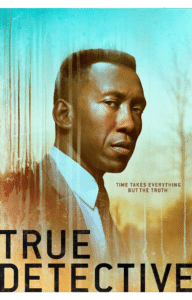

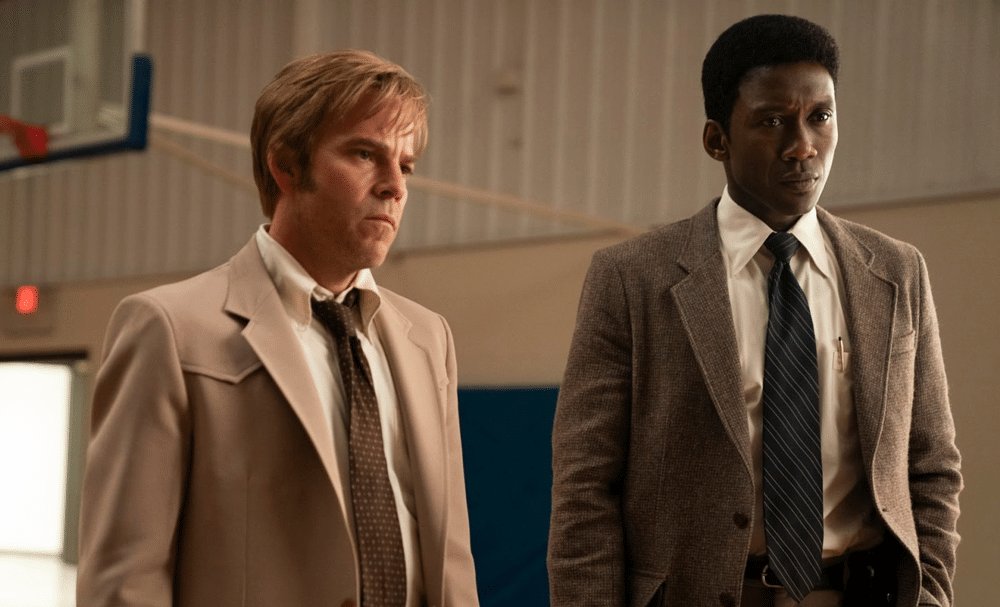
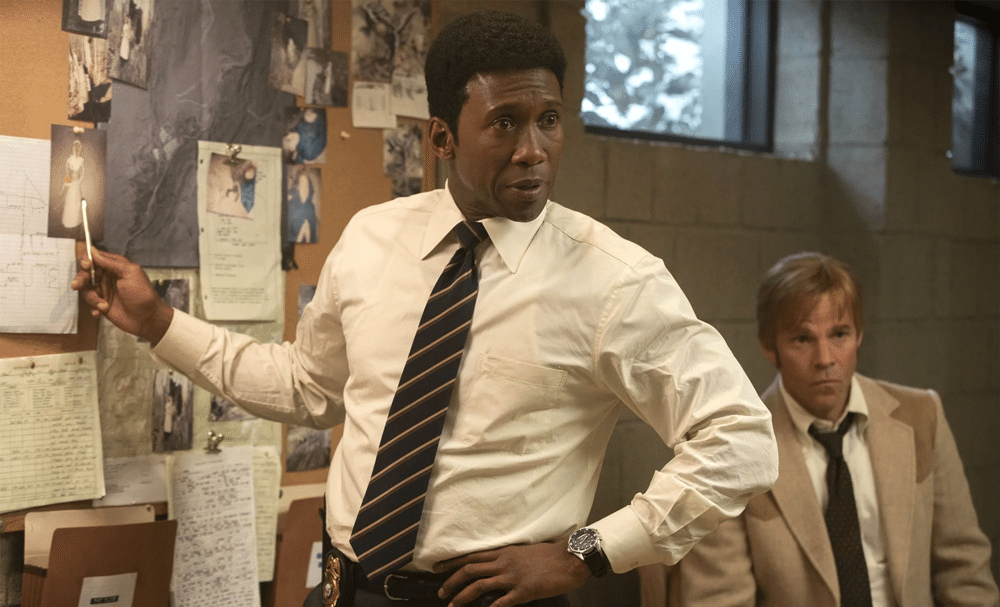
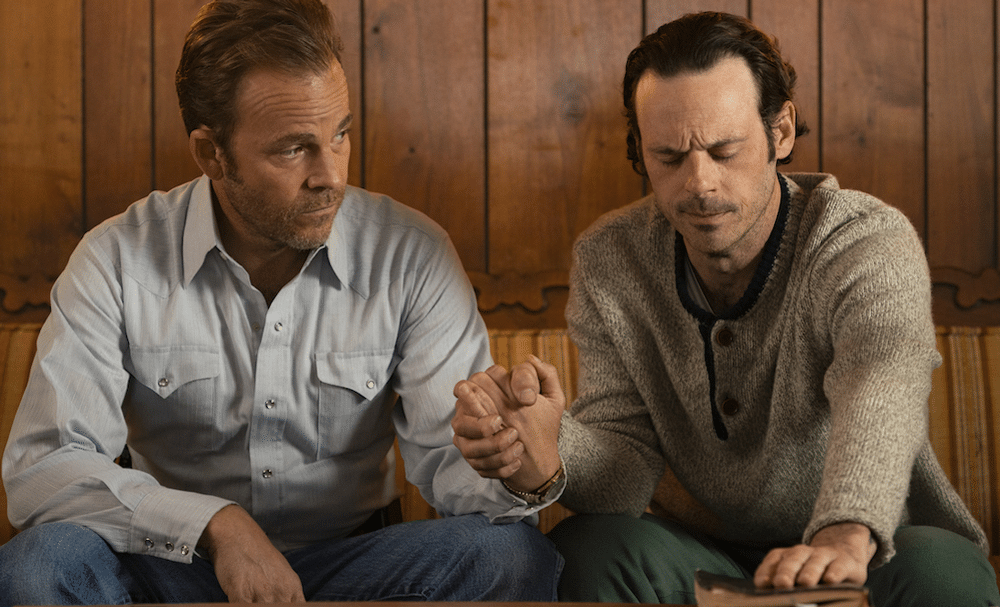
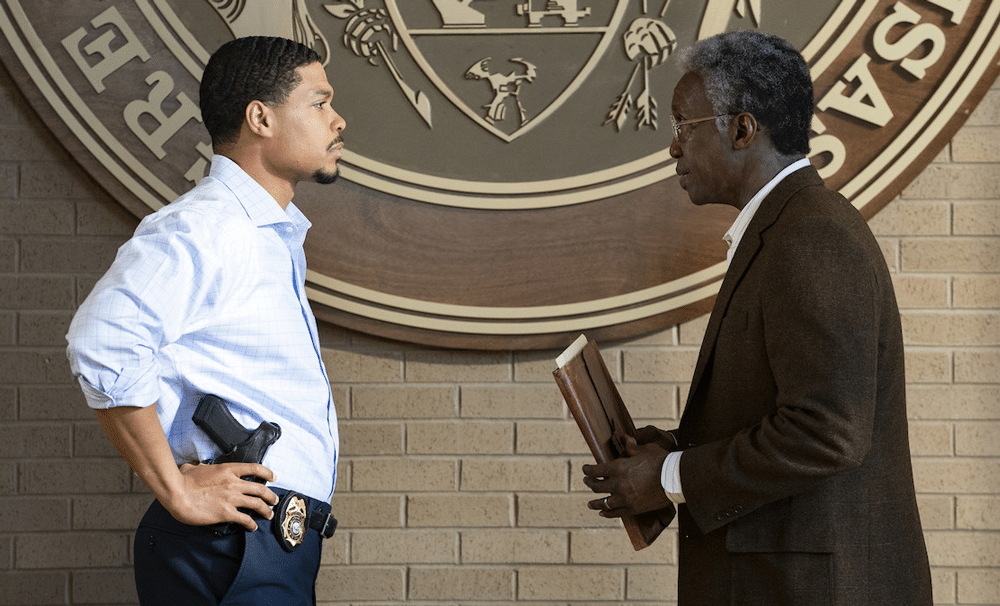
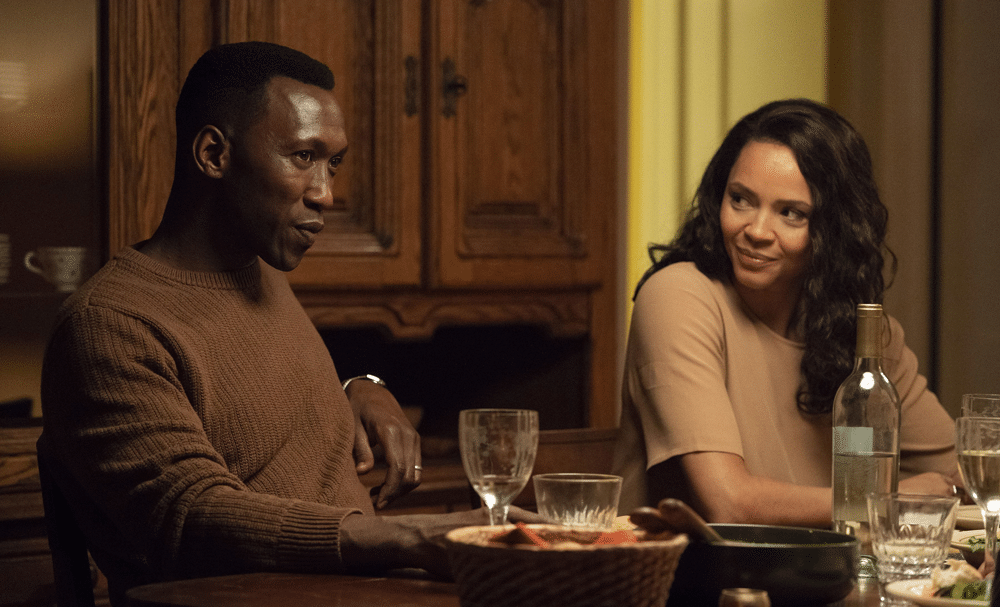
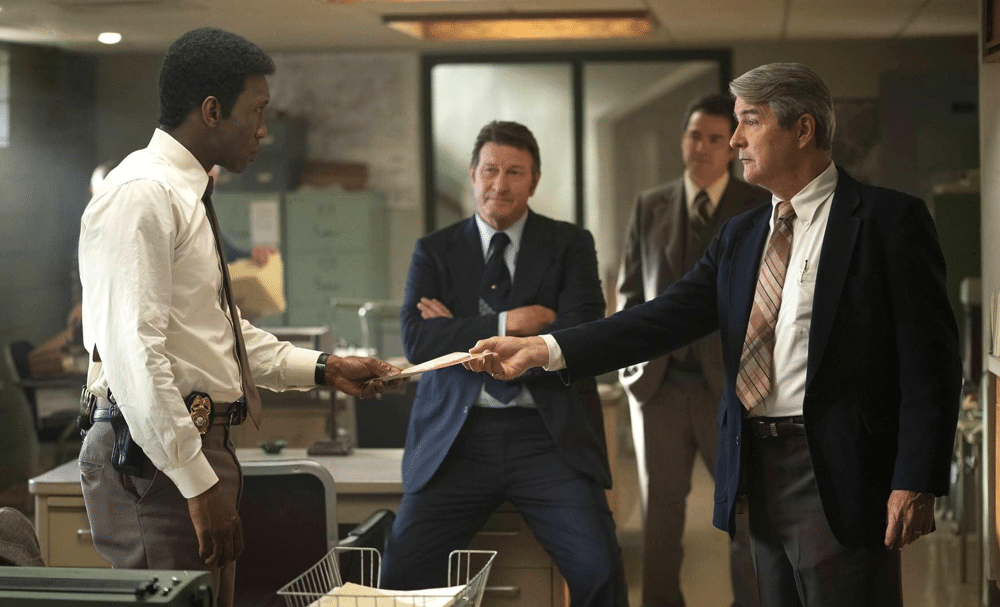
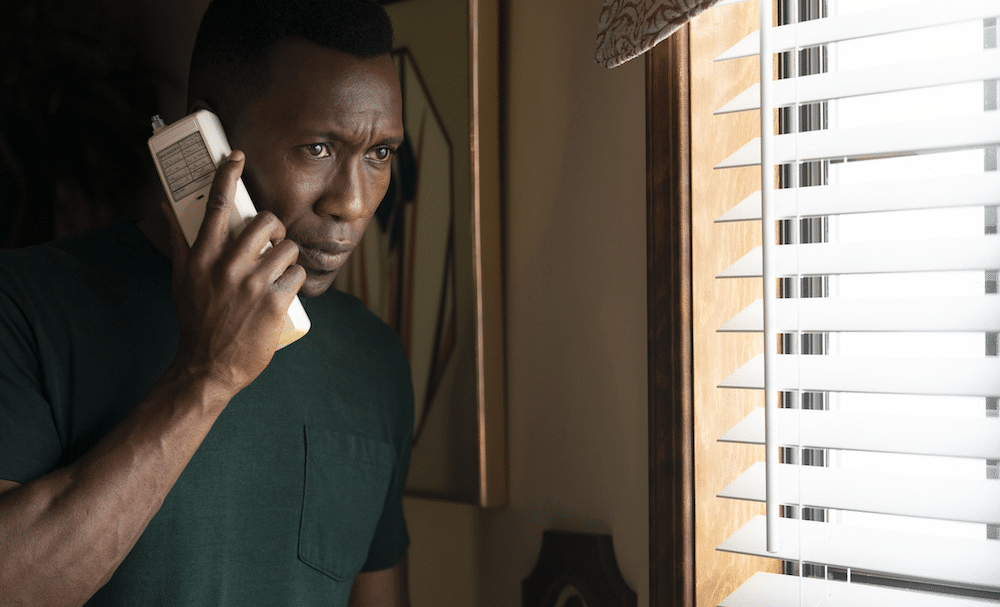
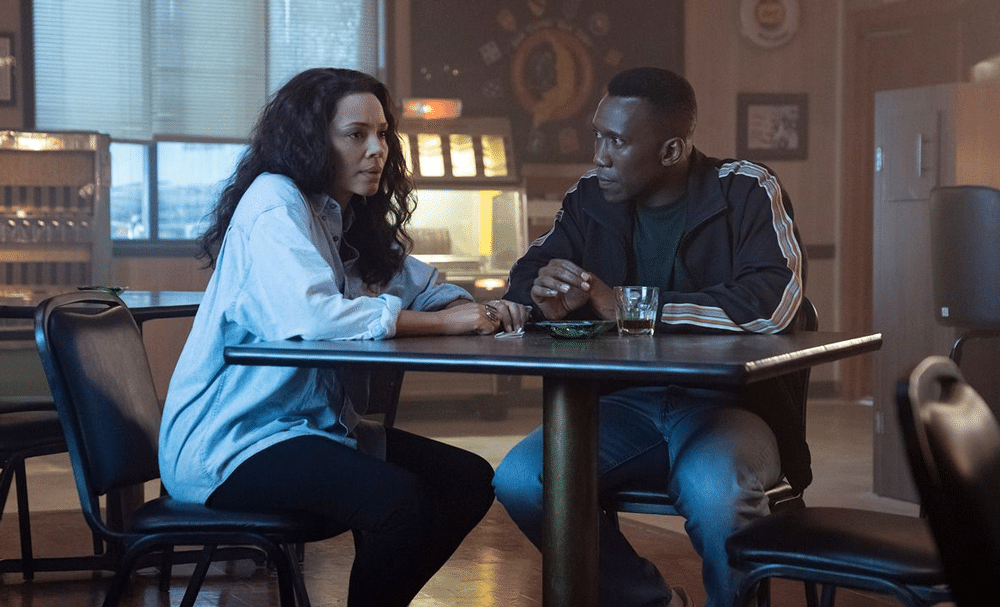
you are knocking season 2 too much. At the very least it had some fantastic music in it, the best ever in fact.